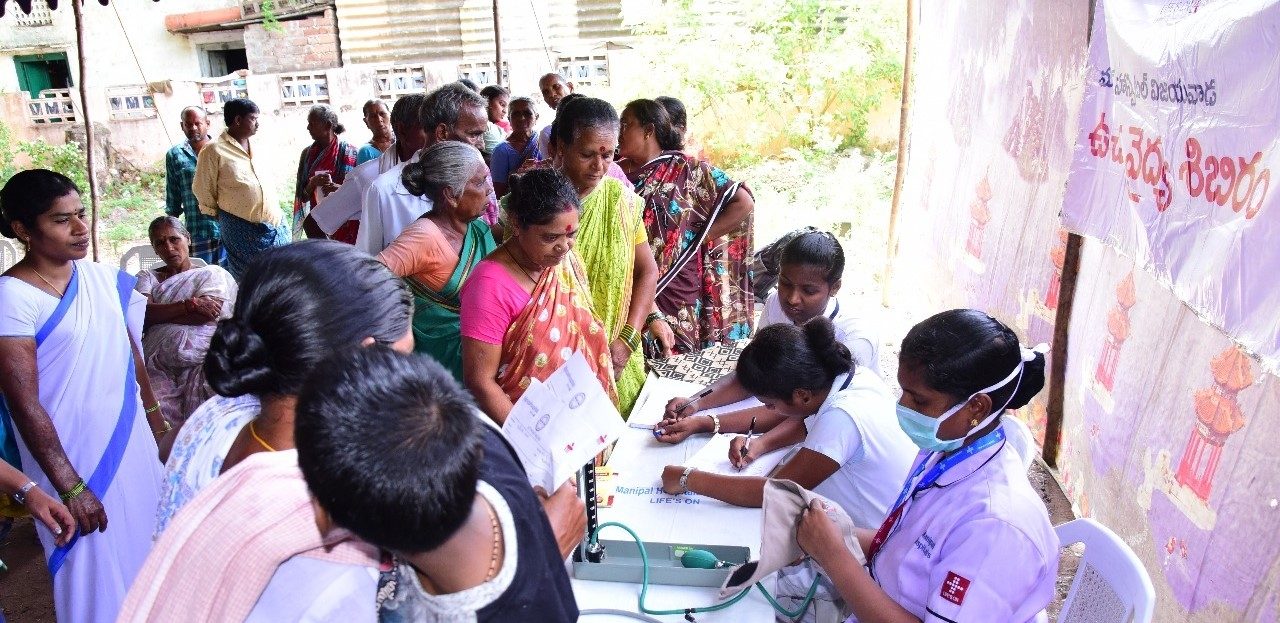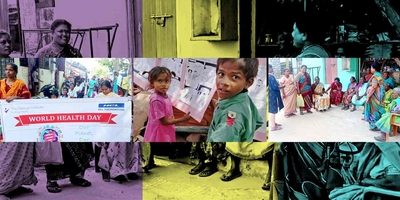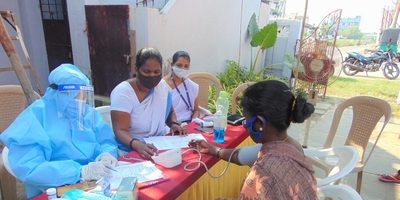
Improving the health status and health service uptake in urban slums of Vijayawada
Urban health, with special focus on the health of vulnerable populations, has been underserved in the recent years. People living on the streets and slum dwellers are at the worst risk of contracting infectious diseases and are increasingly prone to non-communicable diseases owing to changing lifestyles.
Vijaywada has 111 slums with 26% of the total population residing in slums, on streets and in other underprivileged settlements in the city.
The city has a population of 1.5 million people and is ranked third in the world on population per sq. km., following Dhaka (Bangladesh) and Hyderabad (Pakistan). The total unmet need for family planning is below national average that is 6.1%.
One of the major challenges faced by the people living in these slums is poor living conditions. Around 20 slums in Vijayawada are situated on river bends and canals, making these areas very hazardous in terms of sanitation, accessibility to potable water and general living conditions. These slums are densely populated and this poses challenges while controlling seasonal and communicable diseases, ensuring good quality of life and, improving the health outcomes of the vulnerable population.
Owing to the various social and environmental challenges, the population is exposed to a large number of health risks. Water safety and sanitation are highly neglected in this community, increasing the spread of infections. In addition to this is the changing lifestyles of slum dwellers – like increases in sedentary behaviour, poor diet, and increased access to alcohol and tobacco. Given these risk factors, common diseases prevalent in the slums include infectious diseases such as malaria, diarrhoea, HIV/AIDS, tuberculosis and, eye and ear infections; nutritional diseases such as malnutrition and anaemia and; non-communicable diseases such as hypertension, diabetes, cardiovascular diseases, kidney diseases and mental health issues.
However, despite the numerous health issues, health service uptake and lifestyle management seems to be low in this community. Preliminary research showed that the outpatient visits over 27 Urban Health Centers (UHCs) are limited to about 30 patients (ranges 9 to 50 patients)/day on an average. This could be due to the poor outreach activities conducted by the health services in the community.
This has prompted The George Institute with funding from HCL Foundation, to understand the problems being faced by the community and plan and develop an intervention that will address these issues. This could, in turn, help increase the outreach of the local health service providers.
Aim:
The overall aim of the project is to co-develop a comprehensive action plan with the community aimed at improving the health status and uptake of health services in five urban slums of Vijayawada. The proposed project will address the following key objectives:
- To understand the patterns of disease and health service uptake in the community.
- To use a community engagement approach to gain insights into gaps in the healthcare delivery system.
- To co-produce, with key end-users and stakeholders, “testable” interventions to address critical gaps in health care delivery in this population.
Research Methodology & Community Outreach:
The target population for the project are the people residing in five urban slums in the city of Vijayawada. The slums have been selected to include a wide diversity based on geographical location, population size, socioeconomic challenges and risk factors for health. To address the above-mentioned objectives, TGI proposes to do the following activities:
1. Baseline data collection: conduct a baseline survey with 3000 participants selected randomly from the five selected slums by October 2018. This survey will help establish disease patterns, health-seeking behaviour, and perceptions of health related risks and vulnerabilities in the community. The data from the baseline survey will help identify priority areas that TGI will focus on improving through capacity building and usage of low-cost technology.
2. Community engagement: Along with household surveys, community engagement activities will be conducted that will help build capacity within the communities and will contribute to intervention development. Some of the community engagement activities planned include conducting workshops with participants from the selected slums. Through these workshops, participants will be trained to express themselves by using comic strips. This will help bring to life stories and experiences from the community in a new and innovative way.
3. Capacity building of the health workforce: capacity-building activities will be built of the community health workers like ASHAs, ANMs and MAS members. Low-cost technology will be developed to support them in the screening, detection and management of health issues in the community.
4. Health camps: Health camps will also be conducted in each slum regularly as part of the outreach activities. These camps will be conducted within the slum premises and will be free of cost for all the residents. General health check-up and consultations with specialists will be available for all age groups.
5. Stakeholder engagement: stakeholder meetings and analysis will help identify key stakeholders that will help contribute to the production of testable interventions that can be used to improve the health issues and health service uptake in the community.
Current Status:
Mapping of the five slums has been completed and household listing is undergoing. This will be followed by a detailed baseline household survey. Qualitative data collection will also begin along with the household survey.
A health camp has been conducted on the 24th of June in and conducted an eye camp in Ranigari thota in partnership with Akira Eye Hospital on Saturday, 28th of July at the community centre in selected slums. More health camps will be arranged in different slums once in two months.





